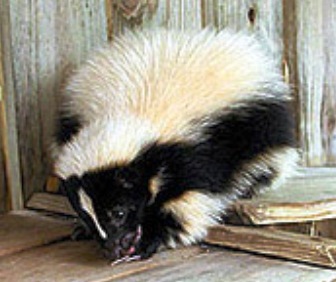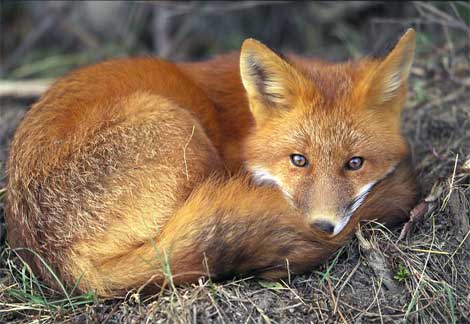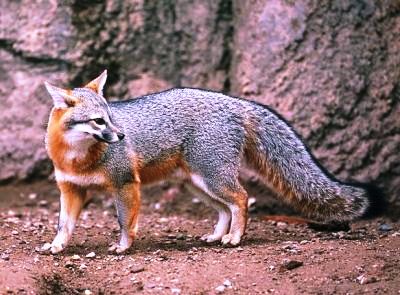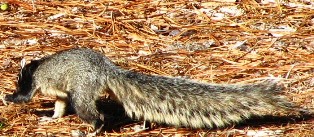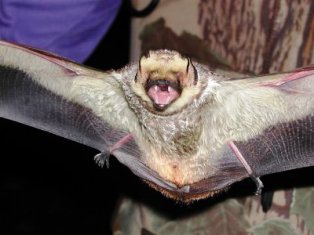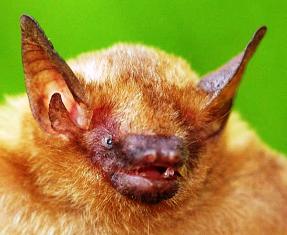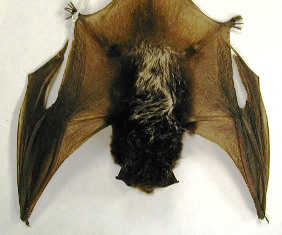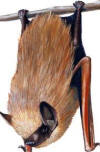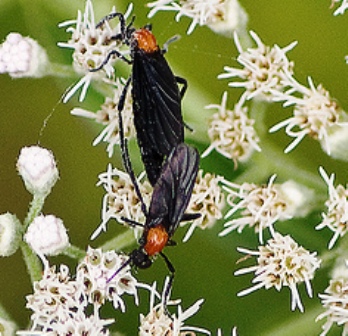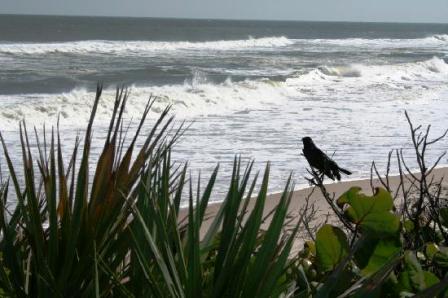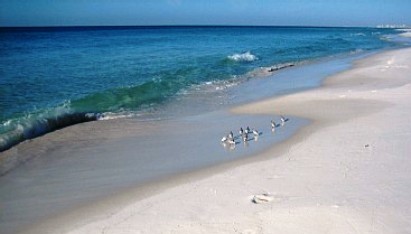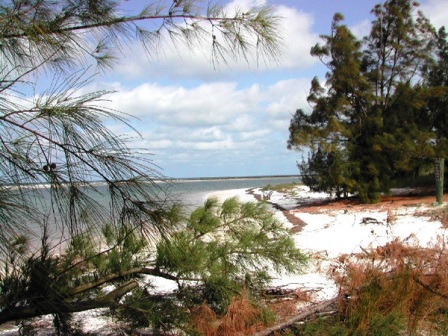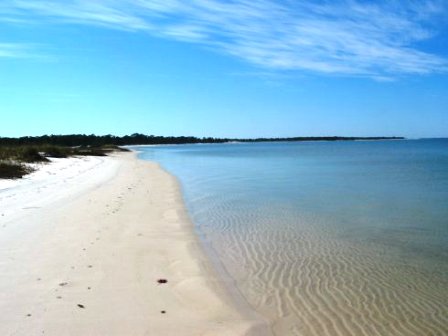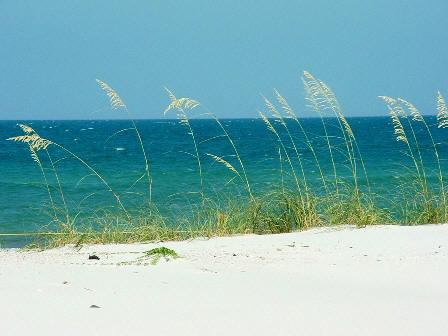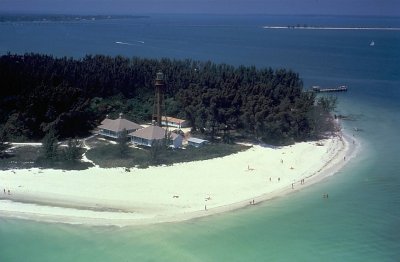Striped skunks are easily recognized by their characteristic colors and pattern. The fur is black with a white stripe that begins as a triangular shape on the top of the head, forks into two stripes that travel down the sides of the back, and usually merges again near the base of the tail. Another white stripe runs from the base of the snout between the eyes and ends on the forehead. Stripe width and length vary with each individual. Stripes sometimes occur on the tail, but more often the tail is composed of both black and white hairs intermixed.
Striped skunks are nocturnal, sleeping during the day in underground burrows and emerging around dusk to search for food. They use scent marking to communicate presence and reproductive state to other skunks. They also communicate visually, by raising their fur and changing posture. Skunks have a good sense of hearing, but their vision is poor. They are mostly silent, but do make a variety of sounds such as churring, hisses, and screams.
The Eastern spotted skunk is a small black and white mammal about
20 inches long, including the eight inch tail, weighing about two
pounds. The Eastern spotted skunk is black with horizontal white stripes
on neck and shoulders, and irregular vertical stripes and elongated
spots on sides. This skunk also has white spots on top of it's head,
between the eyes. The fur of the Eastern Spotted Skunk is the finest and
silkiest of the skunk furs, and pelts were once considered valuable. The
Eastern spotted skunk is the only skunk that can climb trees. And, when
an enemy approaches, it can do a hand stand, point its anal glands
towards the intruder, and spray away! Faster and more agile than the
larger skunks, the Eastern Spotted Skunk is more social than other
skunks, and several individuals may share a den in winter. Highly
carnivorous, the Eastern Spotted Skunk feeds mainly on small mammals,
but also eats grubs and other insects, as well as corn, grapes, and
mulberries. Except when rearing the young, this skunk does not occupy a
particular territory, but rather moves about and dens wherever
convenient.
